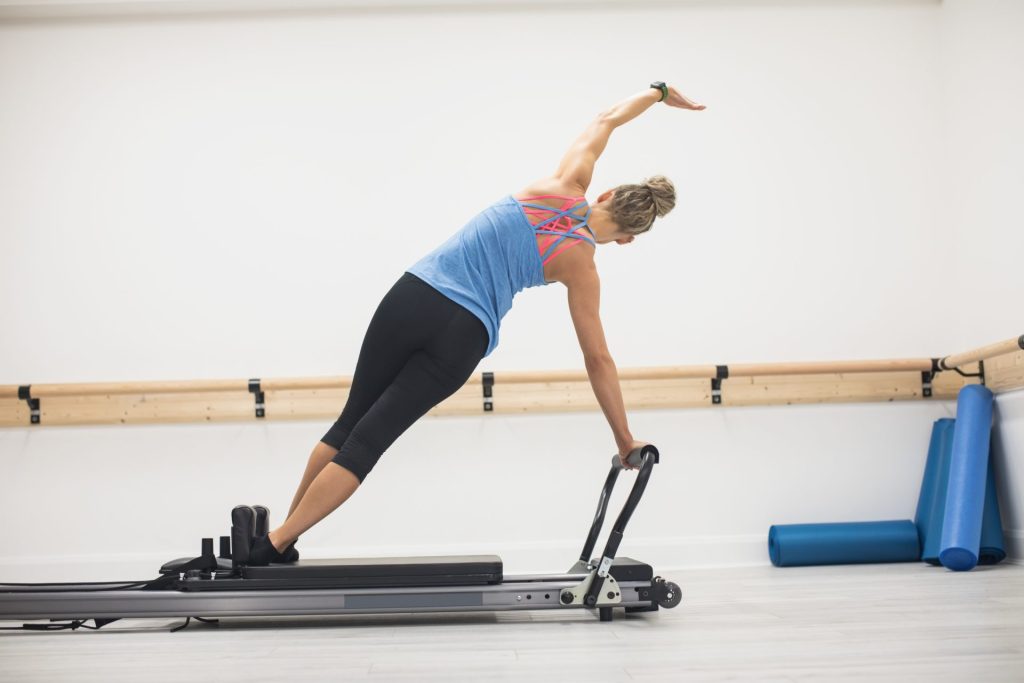Are you tired of doing the same old shoulder exercises and not seeing any significant changes in your muscle growth? If you’re looking to add some variety and impressively build your shoulder muscles, look no further than the Egyptian lateral raise.
The shoulder muscles can be challenging to target, but the Egyptian lateral raise is a proven exercise that can effectively target and strengthen them. Many bodybuilders and fitness enthusiasts have been using this exercise for years to achieve impressive results.
In this article, we will explore the benefits of the Egyptian lateral raise and how to perform it correctly to achieve the desired results. Whether you’re a beginner or an experienced weight lifter, this exercise can benefit you. By the end of this article, you’ll be ready to add the Egyptian lateral raise to your fitness routine for impressive shoulder muscles.
Contents
What Do Lateral Raises Work: Understanding The Egyptian Lateral Raise
The Egyptian Lateral Raise, also known as the lateral deltoid raise or lateral raise, gets its name from the ancient Egyptian sculptures that depicted individuals with wide, well-defined shoulders.
This exercise has since become a staple in strength training and bodybuilding routines due to its effectiveness in targeting the shoulder muscles.
The Egyptian Lateral Raise primarily targets the lateral deltoids, which are located on the sides of the shoulders. These muscles are responsible for shoulder abduction, the movement of lifting the arms out to the sides. By performing the Egyptian Lateral Raise, you specifically isolate and strengthen the lateral deltoids, resulting in more defined and prominent shoulder muscles.
Muscles Targeted By The Egyptian Lateral Raise
The Egyptian Lateral Raise primarily targets the lateral deltoids, but it also engages other muscles in the shoulder complex. The main shoulder muscles targeted during the exercise include:
- Lateral deltoids: These muscles are located on the sides of the shoulders and are responsible for the abduction of the arms.
- Anterior deltoids: The front deltoids are engaged to a lesser extent during the Egyptian Lateral Raise, assisting in the lifting motion.
- Posterior deltoids: The rear deltoids are also involved, especially when performing the exercise with proper form and control.
How The Exercise Specifically Targets Each Muscle Group
The Egyptian Lateral Raise effectively isolates and targets the lateral deltoids due to the specific movement pattern involved. Lifting the arms out to the sides against resistance places a direct load on the lateral deltoids, stimulating their growth and strength development. The anterior and posterior deltoids act as synergistic muscles, assisting the lateral deltoids in the movement.
Benefits Of Incorporating The Egyptian Lateral Raise Into Your Workout Routine
Incorporating the Egyptian Lateral Raise into your workout routine offers several benefits. Firstly, it helps develop stronger and more defined shoulder muscles, contributing to better upper body strength and aesthetics.
Additionally, this exercise improves shoulder stability and can aid in preventing shoulder injuries. By strengthening the muscles surrounding the shoulder joint, you enhance its stability and reduce the risk of imbalances or instability during other exercises or daily activities.
Proper Technique And Execution
To perform the Egyptian Lateral Raise correctly, follow these steps:
- Begin by standing with your feet shoulder-width apart and holding a dumbbell in each hand, palms facing inward.
- Keep a slight bend in your elbows and ensure that your core is engaged for stability.
Slowly lift your arms out to the sides, maintaining a slight bend at the elbows, until they are parallel to the ground. - Hold the contracted position for a brief pause, focusing on squeezing your shoulder muscles.
- Lower the dumbbells back down to the starting position in a controlled manner.
Repeat for the desired number of repetitions.
Common Mistakes To Avoid During The Exercise
While performing the Egyptian Lateral Raise, it’s essential to avoid common mistakes that may compromise the effectiveness of the exercise or increase the risk of injury. Some common mistakes include:
- Using excessive momentum: Avoid swinging your arms or using momentum to lift the weights. Focus on controlled movements, emphasizing the contraction of the shoulder muscles.
- Raising the arms too high: It’s important to lift your arms only until they are parallel to the ground. Raising them too high can shift the emphasis away from the targeted shoulder muscles and put unnecessary strain on the neck and upper traps.
- Shrugging the shoulders: Avoid lifting your shoulders towards your ears during the exercise. Keep your shoulders down and relaxed throughout the movement to ensure proper engagement of the deltoid muscles.
- Using excessive weight: Start with lighter weights and gradually increase the resistance as you become more comfortable and confident with the exercise. Using excessively heavy weights can compromise your form and increase the risk of injury.
Modifications And Variations For Different Fitness Levels
The Egyptian Lateral Raise can be modified or varied to accommodate different fitness levels. Here are a few options:
- Bodyweight variation: If you’re a beginner or don’t have access to dumbbells or resistance bands, you can perform the exercise using only your body weight. Stand with your arms extended to the sides and perform the lifting motion without any additional resistance.
- Resistance band variation: Resistance bands offer a convenient and portable option for performing the Egyptian Lateral Raise. Simply step on the band with both feet and hold the handles or ends of the band with your hands. Perform the exercise as described earlier, maintaining tension in the band throughout the movement.
- Seated variation: If standing is uncomfortable or you want to target the muscles from a different angle, you can perform the Egyptian Lateral Raise while seated on a bench or chair. The seated position helps stabilize the core and isolates the shoulder muscles.
Incorporating The Egyptian Lateral Raise Into Your Workout Routine
Frequency And Intensity Recommendations
To incorporate the Egyptian Lateral Raise into your workout routine, consider the following frequency and intensity recommendations:
- Frequency: Perform the exercise 2-3 times per week, allowing at least 48 hours of rest between sessions to promote muscle recovery and growth.
- Intensity: Choose a weight that allows you to perform 8-12 repetitions with proper form and control. As you progress, gradually increase the resistance to continue challenging your muscles.
Combining The Exercise With Other Shoulder Exercises For A Complete Workout
To create a well rounded shoulder workout, it’s beneficial to combine the Egyptian Lateral Raise with other shoulder exercises. Here are a few exercises that complement the Egyptian Lateral Raise:
- Overhead Press: The overhead press targets the entire shoulder complex, including the anterior, lateral, and posterior deltoids. It helps build overall shoulder strength and stability. Perform this exercise with a barbell or dumbbells, pressing the weight overhead while standing or seated.
- Front Raises: Front raises specifically target the anterior deltoids. Hold a dumbbell in each hand and raise your arms in front of you until they are parallel to the ground. Focus on controlled movements and avoid swinging or using excessive momentum.
- Bent-Over Lateral Raises: Bent-over lateral raises target the posterior deltoids and help develop a well-rounded shoulder appearance. Bend forward at the hips while holding dumbbells, and then lift your arms out to the sides, parallel to the ground.
- Shoulder Press Machine: If you have access to a shoulder press machine, it can be a great addition to your routine. Adjust the seat and handles to your comfort and perform the exercise with proper form, engaging the entire shoulder complex.
By incorporating a combination of these exercises, you can ensure that all the shoulder muscles are adequately trained, promoting balanced development and strength.
Sample Workout Routines Featuring The Egyptian Lateral Raise
Here are two sample workout routines that feature the Egyptian Lateral Raise:
Beginner Routine:
- Egyptian Lateral Raise: 3 sets of 10-12 reps
- Overhead Press: 3 sets of 8-10 reps
- Front Raises: 3 sets of 10-12 reps
- Seated Dumbbell Shoulder Press: 3 sets of 8-10 reps
Advanced Routine:
- Egyptian Lateral Raise: 4 sets of 8-10 reps
- Barbell Shoulder Press: 4 sets of 6-8 reps
- Bent-Over Lateral Raises: 3 sets of 10-12 reps
- Arnold Press: 3 sets of 8-10 reps
Remember to adjust the weights and repetitions based on your individual fitness level and goals. Rest for 1-2 minutes between sets to allow for adequate recovery.
Tips for Maximizing Results
Proper Warm-up And Stretching Exercises
Before performing the Egyptian Lateral Raise or any shoulder exercises, it’s essential to warm up properly to prepare the muscles and joints for the workout.
Start with light cardio exercises, such as jogging or jumping jacks, to increase blood flow to the muscles. Then, perform dynamic stretches for the shoulders, such as arm circles or arm swings, to loosen up the joint and enhance the range of motion.
Progression And Overload Principles For Continuous Improvement
To maximize your results with the Egyptian Lateral Raise, it’s crucial to apply the principles of progression and overload. Gradually increase the resistance or weight you use as your strength improves. Aim to challenge your muscles by reaching fatigue within the desired rep range. This progressive overload stimulates muscle growth and strength development over time.
Listening To Your Body And Avoiding Overtraining Or Injury
Pay attention to your body’s signals during your workouts. If you experience pain or discomfort while performing the Egyptian Lateral Raise or any other exercise, modify the movement or reduce the weight.
Pushing through pain can lead to injury and hinder your progress. Additionally, ensure you have proper form and technique to avoid unnecessary strain on the shoulders and other muscles involved.
Take rest days between workouts to allow for proper recovery. This rest period is essential for muscle repair and growth. Overtraining can lead to diminished results and increased risk of injury, so listen to your body and give it the time it needs to recover.
Common FAQs About The Egyptian Lateral Raise
Can The Exercise Be Performed With Different Equipment?
Yes, the Egyptian Lateral Raise can be performed with various types of equipment. Dumbbells are commonly used, but you can also use resistance bands, cable machines, or even just your body weight. The key is to maintain proper form and control throughout the movement, regardless of the equipment you choose.
Is It Suitable For Beginners Or Only Advanced Lifters?
The Egyptian Lateral Raise can be performed by individuals of all fitness levels, including beginners. However, it’s important for beginners to start with lighter weights or even bodyweight variations until they have developed sufficient strength and proper form. As you progress, you can gradually increase the resistance to continue challenging your muscles.
Can The Exercise Help With Posture And Shoulder Stability?
Yes, the Egyptian Lateral Raise can help improve posture and shoulder stability. By strengthening the shoulder muscles, particularly the deltoids, you promote better alignment of the shoulder joint, which can contribute to improved posture. Additionally, strong shoulder muscles provide better stability, reducing the risk of shoulder injuries and enhancing overall shoulder function.
Summing Up
The Egyptian Lateral Raise is an effective exercise for targeting the shoulder muscles, specifically the lateral deltoids. By incorporating this exercise into your workout routine, you can achieve stronger, more defined shoulder muscles, enhancing your overall upper body strength and aesthetics. Additionally, the exercise promotes shoulder stability and can aid in improving posture.
If you’re looking to develop impressive shoulder muscles and improve your overall upper body strength, the Egyptian Lateral Raise is a valuable addition to your workout routine. By following proper technique and incorporating it with other shoulder exercises, you can achieve well-rounded shoulder development.
Remember,
Building strong and well-developed shoulder muscles takes time and dedication. Consistency in your training, proper form, and gradual progression are key. So, get ready to lift those weights, focus on your form, and embrace the power of the Egyptian Lateral Raise for impressive shoulder muscles!



